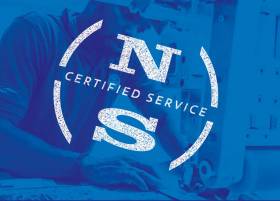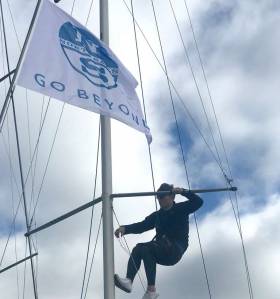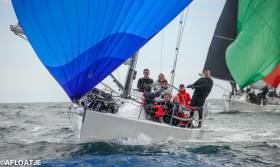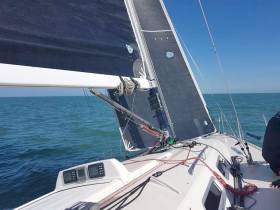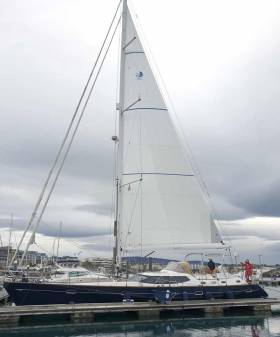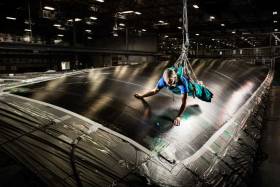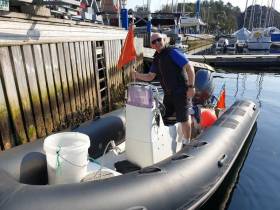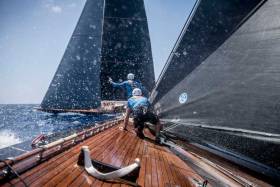Displaying items by tag: North Sails Ireland
The North Sails Ireland regatta service team will be in Dun Laoghaire this coming weekend for the ICRA Nationals at the Royal St. George Yacht Club.
If you need any help with damaged sails or spares please do not hesitate to our Service Manager Richard Marshall who will be leading the North Sails Ireland effort.
Call Richard on 086 6686281 or Prof O'Connell on 086 2364200 and they will be ready to help you.
Come and chat to us at the North Sails box at Dun Laoghaire Marina after racing on Friday and Saturday. The van will be outside ready to take your sails to our overnight service loft.
Hopefully, you won't need us though!
I'm just back home after a great day's sailing here with Darragh McCormack in Foynes Yacht Club on the Shannon Estuary at the Mermaid Munster Championships writes Nigel Young of North Sails Ireland.
I have to say the welcome you get in Foynes YC as a visitor is second to none......From the minute you arrive to the minute you leave you really feel part of the FYC family.
I had been invited to FYC by Darragh to crew with him and check out his National Championship winning sails with my own eyes.
You can read all about that regatta and the Fairy-tale as I like to call it here
This was a unique outing for me as it was only my second time actually racing the Mermaids and the first time racing in a three-man team with my eldest son. Seems like I now have a ready-made crew for any North Sails outings! Thanks Jack...
 North Sails Ireland took the top three spots overall in the Munster Championships
North Sails Ireland took the top three spots overall in the Munster Championships
The day went well with North Sails powered boats taking the top three spots overall in the Munster Championships. I was especially proud to sail with Darragh and my own son Jack finishing first overall. Great class, great club, great people and the North Sails don't seem too bad either!
Read all about the North Sails victory in Foynes here
North Sails Ireland De-Camp to Tarbert!
The North Sails Ireland Team moved out of home for a few days last week and set up camp in Tarbert for the 2019 Scottish Series writes Nigel Young.
Maurice O'Connell was helping Andrew Craig and his team on the J109 Chimaera in the RC35 Class.
Shane Hughes was sailing with the Wrights on the recently revamped Half Tonner MATA looking after the rig and the new 3Di sails.
Yours truly was found pulling a few ropes and offering trim and rig advice to Jonny Swan and the team on Harmony.
The series offered up the full mix of sailing conditions and our North Sails clients took home a large chunk of the Silverware!
Congratulations to all the winners across all the classes and also to the organisers of this classic early season event held in an amazing natural sailing arena.
Please check out the link here for a more in-depth look at who did well at the regatta.
North Sails Ireland Team Head for Scottish Series
The North Sails Ireland team of Nigel Young, Shane Hughes and myself, Maurice O'Connell, head to the Scottish Series today to race with our customers and against our many friends from Ireland and the UK.
J109 Chimaera
I will be racing on Andrew Craig's beautiful J109 "Chimaera" pictured above. Chimaera is showing some great early season form, finishing third in the J109 East Coasts and also winning a number of early-season DBSC races. I will be tactician with Brian Matthews navigating and John White trimming (he of the INSS man-overboard fame in Round Ireland 2018).
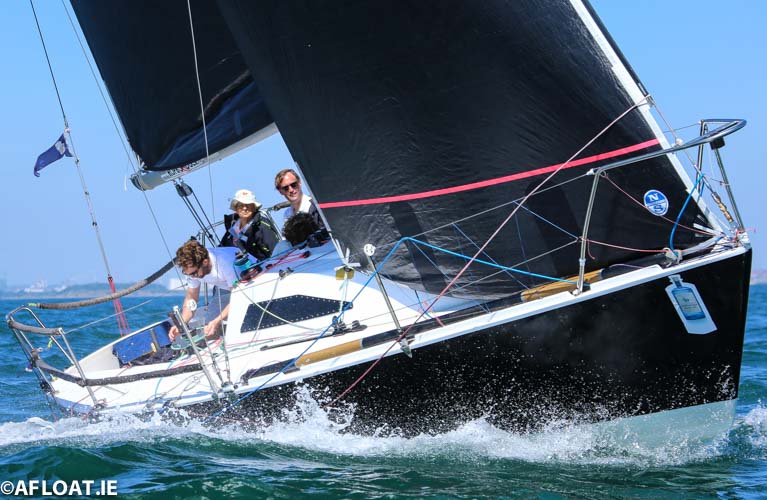 Johnny Swan's half-tonner "Harmony Photo: Afloat.ie
Johnny Swan's half-tonner "Harmony Photo: Afloat.ie
Half Tonner Harmony
Nigel will be racing on Johnny Swan's half-tonner "Harmony". Johnny finished second in 2018 Half-Ton Cup and narrowly missed winning Scottish Series last year. Johnny will be hoping to go one better this year!
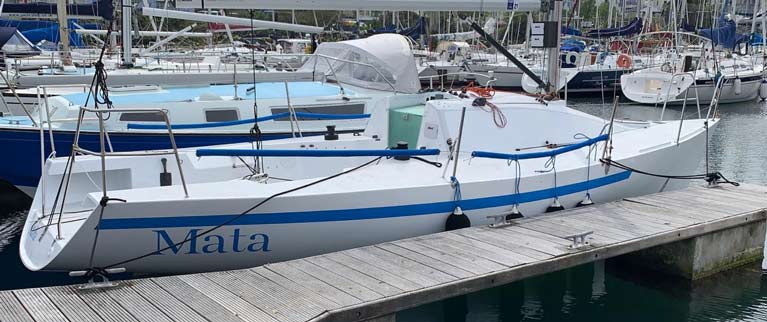 The new Mata Half tonner dockside in Howth Photo: Shane Hughes
The new Mata Half tonner dockside in Howth Photo: Shane Hughes
Half Tonner Mata
Shane will be racing on the latest addition to the Irish half-ton fleet - the Wright brother's "Mata" from Howth Yacht Club. The Wright brother's "Mata" is the former "Trastada" and Shane has been working the boat up in HYC over the past month. It will be very interesting to see how she goes!
All of the above will be flying full North Sails inventories.
North Sails Ireland Stunning Start to J109 Racing Season
Here at North Sails Ireland, we have had a fantastic start to this year's J109 class season writes Maurice O'Connell. The East Coast Championships in the National YC that featured North Sails Ireland as an event sponsor boasted a strong fleet of 10 boats and the overall winner wasn't decided until the finish of the last race.
It was a great event for North Sails in that the overall winner, Tim and Richard Goodbody's "White Mischief" raced the event using her three-year-old North 3Di jibs and her six-year-old A2 spinnaker. This was a fantastic testament to our sails' outstanding durability and performance lifespan. She also flew her 2018 3Di mainsail and her 2018 A4 spinnaker on the Sunday.
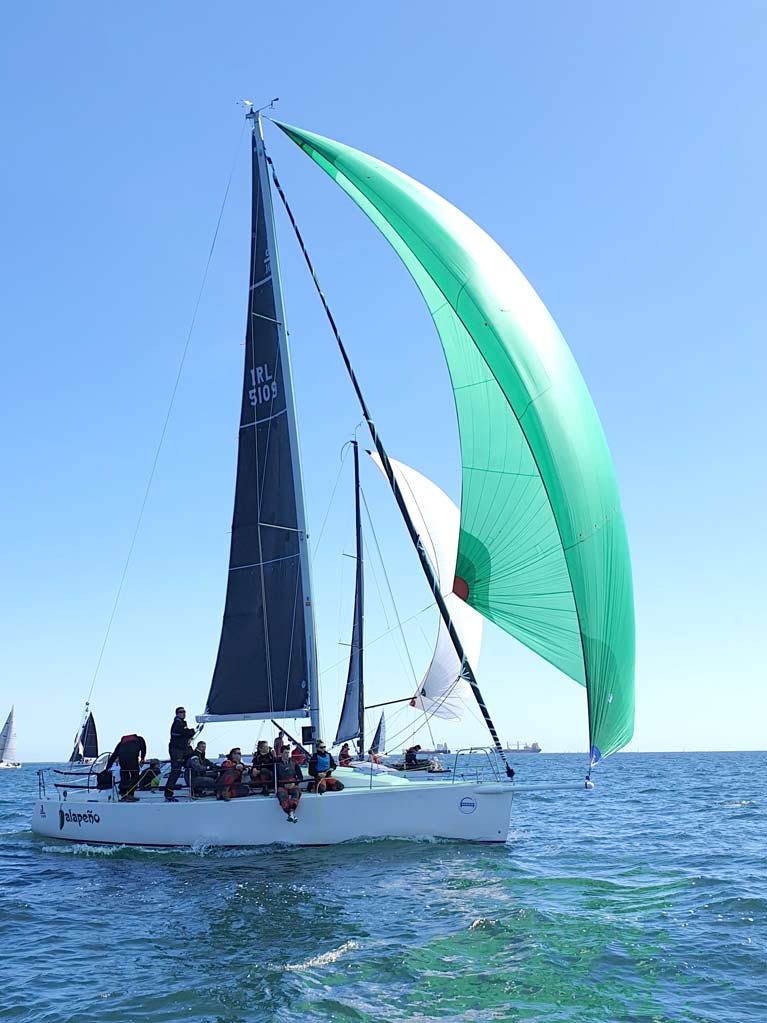 Jalapeno flying her 3Di Main and Superkote A2 Spinnaker
Jalapeno flying her 3Di Main and Superkote A2 Spinnaker
Second overall was "Jalapeno", skipped by Paul Barrington who flew her new 3Di Code 1 jib to win the DBSC coastal series on the Saturday which set her up for the battle with "White Mischief" on the Sunday.
Third overall was class captain Andrew Craig's "Chimaera" flying her full North Sails inventory including her 2019 Code 1 and 2 jibs.
 Chimaera flying her 3Di Mainsail and Superkote Composite A2 Spinnaker
Chimaera flying her 3Di Mainsail and Superkote Composite A2 Spinnaker
"Our great clients did us proud last weekend and congratulations to "White Mischief" in winning with her 2016 jibs and 2012 spinnaker. Even though "White Mischief" regularly wins in DBSC racing, we are really delighted that her three and six-year-old sails are still performing at the top end of the championship fleet", said Nigel Young, manager of North Sails Ireland.
The next class event will be the National Championships in October, which will be again sponsored by North Sails.
North Sails Ireland have just fitted a new mainsail for Glen Finegan's lovely Discovery 67, Tangaroa 2 which has recently arrived from Scotland writes Maurice 'Prof' O'Connell.
Glen is returning to Ireland, having worked abroad for many years.
Working on the new mainsail for "Tangaroa" was a joy and we are really pleased with the result. This will set Glen and his crew up for many years of happy cruising. Safe travels guys!
Here is a quote from Glen: "Our new mainsail fits beautifully. I guess I shouldn't have been surprised given the care and attention taken by Prof and the North Sails team from the moment I placed the order. We are looking forward to our first trip south with it this weekend and putting it through its paces but my first impressions are excellent!".
There is More to Modern Sail Service Than Meets the Eye!
Here at North Sails Ireland, we are blessed with a top level service department lead by the very skilled Richard Marshall from Cobh writes Nigel Young. There is nothing Richard and his team cannot do with fabrics of any kind and the fact that he is also a top-flight sailor in his own right also helps!
Richard Marshall
Richard and his team have been servicing all of the North Sails products sold in Ireland since 2004 and together we have developed some really nice repair techniques over the last sixteen years.
Richard is really well known for dominating local sailing with his wooden Bolero Woody back in the day. Six years running South Coast Champion. He has also raced on many other local boats including Illes Pitiuses at the Quarter Ton Cup with Jason and Dominic Losty. I had to remind him about the fact he was also Dutch Melges 24 Championship back in 2015 with yours truly and Colm Dunne from Kinsale.....now that was a great regatta.
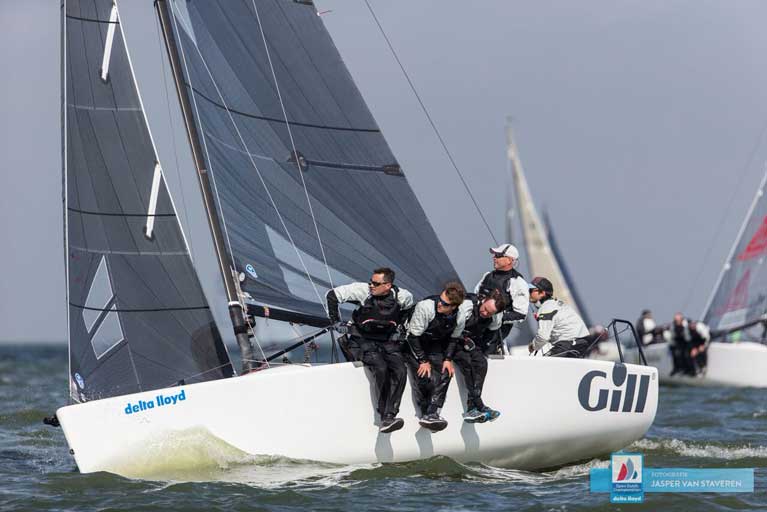 Richard Marshall, Colm Dunne and Nigel Young racing a Melges 24
Richard Marshall, Colm Dunne and Nigel Young racing a Melges 24
The Service team in Cobh has a full understanding of what's required to repair and service all of the North Sails products including the unique to North 3Di sails. These sails require specialist repair techniques and materials but having said that they are not often in the repair loft due to the lack of film in the sails!
However when they do need service why would you buy a state of the art car and then take it to your local garage for repairs? The simple answer is that you wouldn't do it obviously and you should not do it with your state of the art North Sails either!
There is no other sail loft in Ireland qualified to repair 3Di sails so you should take care to make sure you always use the North Sails Service Team to look after your sails. North Sails also often use custom unique to North sail fittings so to be certain your sails are in the very best condition after any service work you really need to be calling us for help.
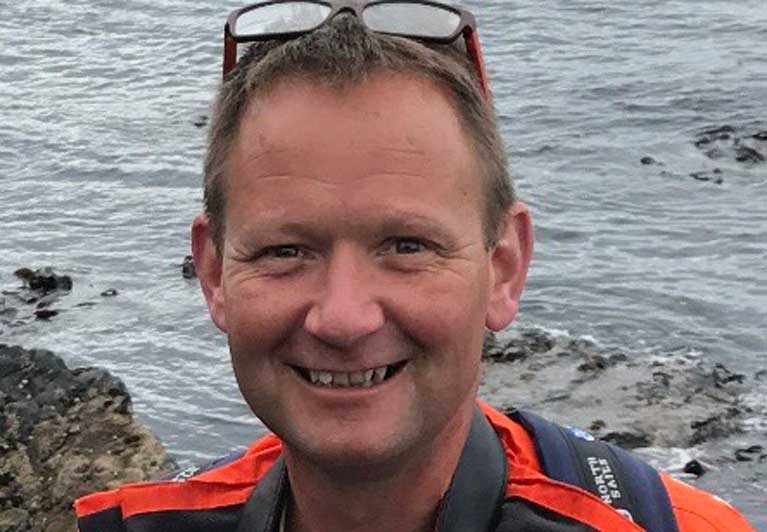 Paul Keal
Paul Keal
Paul Keal
Paul Keal has been a key part of the North Sails Service Team since 2012. He is a very experienced sailmaker having served his time with North Sails in England looking after the spinnaker department and working on One Design and Maxi boat sails during his time there. Paul has been sail making for almost thirty years on and off in Europe and the States and if he keeps going he will soon be catching me up! Paul like Richard is a very good sailor and that helps him to fully understand the needs of the clients when working on their sails.
You know when you put your sails in for service here at North Sails they are in very safe hands with years of knowledge.
Also, do not forget that as mentioned at the top of the page Richard and his team can make anything in almost any fabric. Marine upholstery, covers, spray hoods, dodgers and winter covers also a speciality.
We also offer a sail washing service in partnership with Tip Top Laundry in the south coast of England. When it comes to sails, covers and anything at all to do with the engine above the deck you are in great hands.
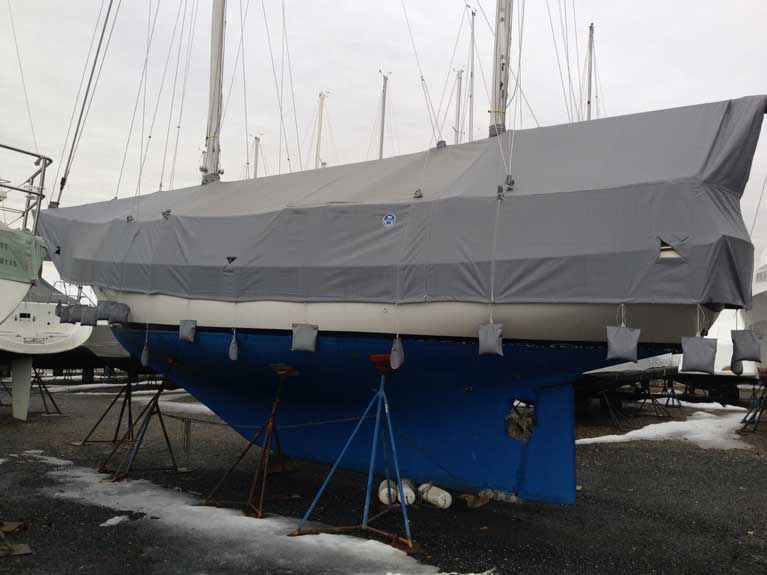 A North Sails Ireland winter cover
A North Sails Ireland winter cover
For any sail service or cover requirements please do not hesitate to contact any of the North Sails Team.
You can find us all here...
Sail FAST!
Prof O'Connell Returns to Melges 24 for Norwegian Speedcamp
It was a fantastic feeling for me to retain my connection with the Melges 24 class, even though it's been some time since our World Championship win on "Embarr".
Last weekend I travelled to Bergen in Norway to work with the Norwegian fleet at their annual "Speedcamp".
The camp was organised by Jens Aptern Wathne who is also the president of the International Class Association. Winds were light for the weekend and we had some excellent session both ashore and afloat. Afloat we focused on body weight driven kinetics, light air boat and sail trim and optimal techniques for acceleration and deceleration pre-starts.
Ashore, we had some lively classroom sessions on starting tactics, ISAF Rules Of Sailing and rig tune.
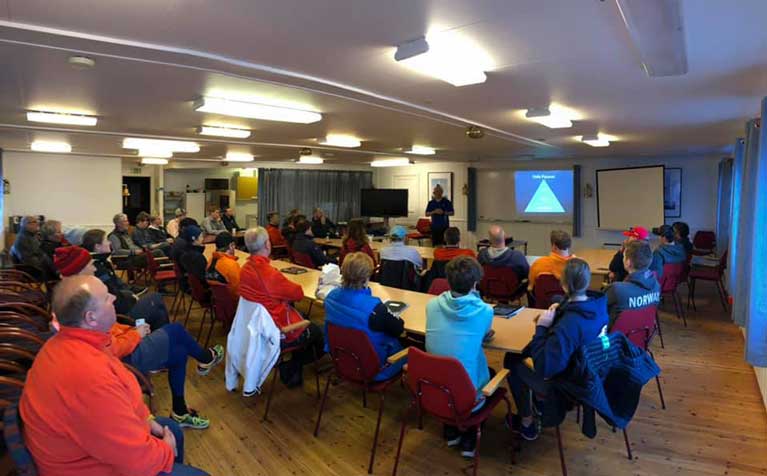 Prof O'Connell in the classroom teaching the skills pyramid
Prof O'Connell in the classroom teaching the skills pyramid

I'd like to thank all the volunteers who made the weekend a great success. I can't wait to get back into one of my favourite raceboats - the Melges 24!
The North Sails Trickle Down Effect...
You often hear about the trickle down effect of products developed for the America's Cup, it makes great PR and reads well in the Social Media but so many times it never really makes it all the way to the smaller boats writes North Sails Ireland's, Nigel Young
I am happy to say that with 3Di it really has made it all the way down from America's Cup and Super Yachts all the way to the International Moth and everything in between. We now have a 3Di Film-less product available for everyone, not just the Grand Prix end of sailing.
Check out the latest Class to switch over to 100% 3Di Sails in the North Family. I have sailed the Melges 24 since 1994 and it's great to see that boat is now fully 3Di. Check out the latest news from Miami here: Melges 24 3Di Success on the Race Track
Here in Ireland, we delivered our first 3Di sail to the Kelly Family and the J-109 Storm way back in 2012. As a testament to the 3Di product and production process that sail is still in use today with Brian Jones and his team on the J-109 Jelly Baby. No major repairs have been done to that sail, only minor luff tape damage and some small chafe repairs, not unusual for an 8-year-old sail.
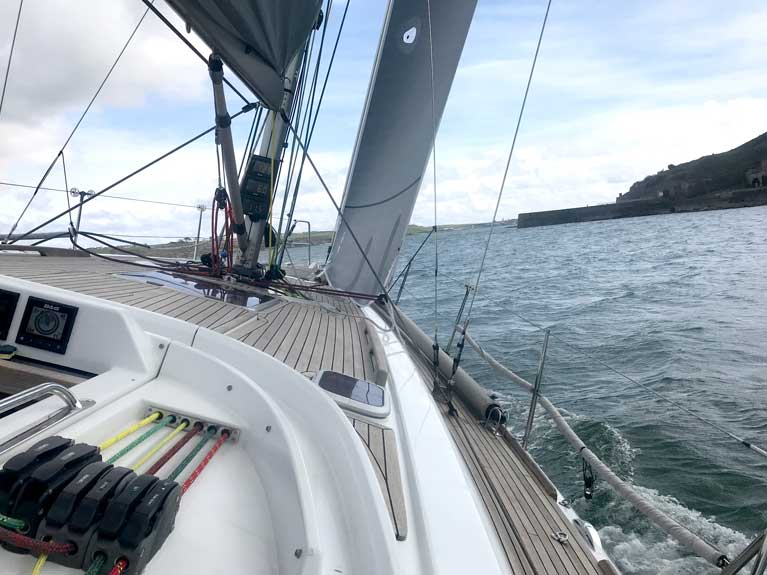 Denis Murphy's new No 3 sail on Nieulargo trialed on Friday and used to devastating effect on Sunday
Denis Murphy's new No 3 sail on Nieulargo trialed on Friday and used to devastating effect on Sunday This month's sail trials in Cork Harbour with X34 Alpaca sporting a 3Di Aramid Code 2 Head-sail and her Polyester 3Di Nordac Cruising Mainsail
This month's sail trials in Cork Harbour with X34 Alpaca sporting a 3Di Aramid Code 2 Head-sail and her Polyester 3Di Nordac Cruising Mainsail
In the last few months, North Sails Ireland have supplied 3Di sails to 1720s, J-80's, Melges 24's and several other small one-off IRC boats. So it's not just PR its reality, 3Di really does cover every possible sail size out there for both Racing and Cruising. For the full 3Di Family of sails check out this link here
North Sails are now so confident about the lamination of 3Di that they offer a Lifetime Warranty against delamination on all 3Di products......Try asking your Sailmaker for something similar and they will be seen running for the door!
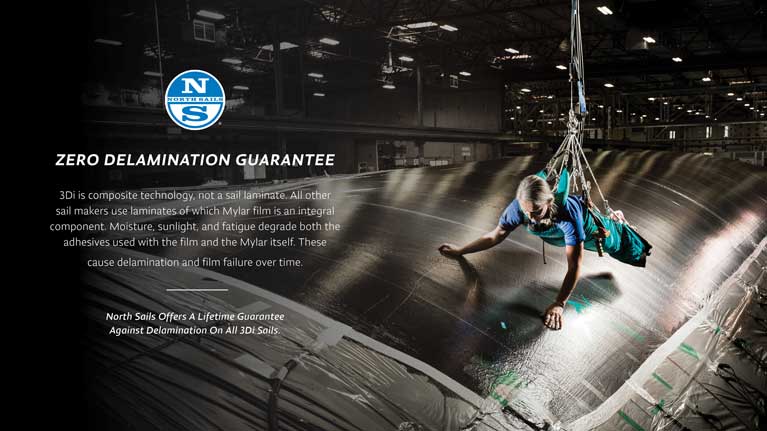 North Sails offer a lifetime guarantee on delamination on 3Di sails
North Sails offer a lifetime guarantee on delamination on 3Di sails
Here in Ireland, we have delivered hundreds of 3Di sails since the first sail back in 2012 and the overriding factor is how long they last. When I say that I do not mean their overall lifespan but the shape holding. The shape holding of 3Di is a product of many factors but one of the facts I like the most is this:
3Di Sails have double the fibre content of our old 3DL product!
3Di sails kilo for kilo in all up weight have double the amount of fibre when compared to our best 3DL sail ever made. So back in the 3DL days, a Jib weighing say 18kgs would have only just over 6.5kg of fibre in the sail. Roughly 35%.
The equivalent 18kg 3Di Sail has almost 70% fibre 12.5kg so it's very easy to see why 3Di Sails hold their shape so well. Think about that for a moment, 3Di has DOUBLE the fibre content.......
The fibres are what gives a sail its ability to retain the design shape. So more fibre can only be good for the long term shape holding of your sails.
As a rule of thumb, the plastic film in our 25-year-old technology 3DL sails and our current competitors' sails accounts for over 50% of the all up weight of the sail. If you then add light skins to make it look like a 3Di sail that adds even more parasitic weight again.
Plastic is not Fantastic!
Remember 3Di has no Plastic film.........We like to call the plastic film parasitic weight, it adds nothing to the sail in real terms except weight. Not only that it needs protecting so it does not crack hence all the additional films on the outside Taffeta's, Light skins etc...
3Di needs none of this as there is no plastic film in the sails and the greatest knock-on effect of that and the special glues we use is they cannot de-laminate and that is guaranteed.
Next time you are thinking about a new sail think about 3Di. Yes, they cost more initially but ask any one of our 3Di clients here in Ireland what they think and I know the answer you will get.
They cost more at the outset but offer much greater value for money in the long run. Less time in the service loft, more time flying in their original FAST design shape.
North Sails 3DL was 25 years ahead of the opposition, 3Di is light years ahead.
Sail FAST.
Following on from our last piece last week on the J24 Class, the subject of headstay sag has come up on several occasions writes Nigel Young. Headstay sag plays a large part in all sailboats and especially here in Ireland on boats like the J-24, 1720, SB20, Dragon, J-80, J-70 and many more.......
This was also a question that popped up several times during our recent Sail Trim Tour of the country. How can it possibly be better to sail with a large sag in the headstay in light airs? It makes no sense at all at first glance! However, it does work...
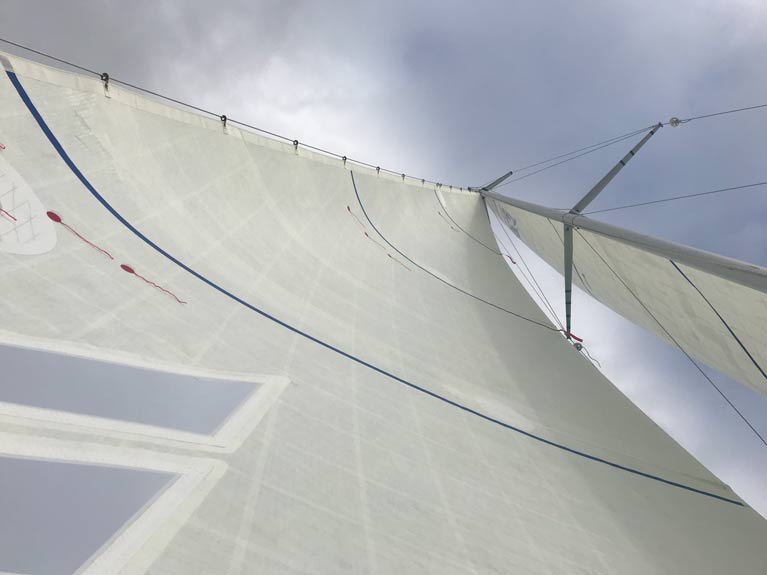 You can see the sag but in this picture of a 1720 headsail even though the wind had just died. In a perfect world, the headstay would be softer with much greater sag to deepen up the sail shape. Having said that all telltales are flying ok.
You can see the sag but in this picture of a 1720 headsail even though the wind had just died. In a perfect world, the headstay would be softer with much greater sag to deepen up the sail shape. Having said that all telltales are flying ok.
To find out why follow the link here and the secrets will be revealed by our North Sails Experts.
"Sailboats with headstay sag often point higher and maintain boatspeed better in light-air conditions"
For more articles like this please go direct to the North Sails Website or sign up to our Newsletter here and the articles will be delivered straight to your inbox. Nothing nicer than reading all the top sailing tips and trick from the comfort of your own home!




























